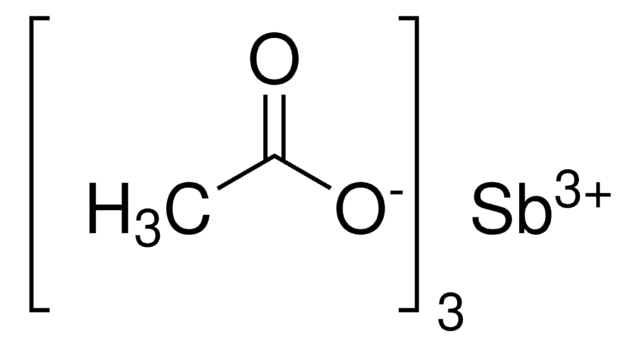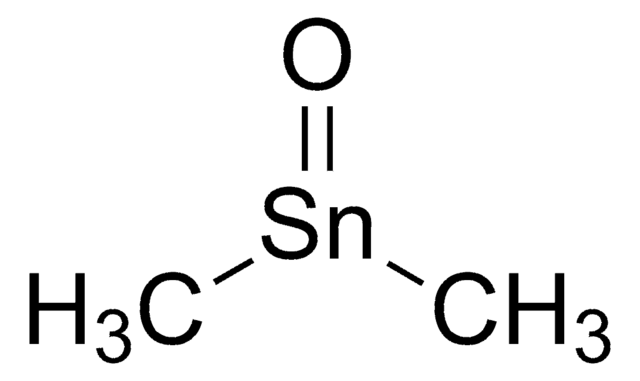345164
Tin(II) acetate
Synonym(s):
Stannous acetate, Tin acetate, Tin diacetate
About This Item
Recommended Products
form
solid
reaction suitability
core: tin
reagent type: catalyst
mp
180-182 °C (lit.)
SMILES string
CC(=O)O[SnH2]OC(C)=O
InChI
1S/2C2H4O2.Sn/c2*1-2(3)4;/h2*1H3,(H,3,4);/q;;+2/p-2
InChI key
PNOXNTGLSKTMQO-UHFFFAOYSA-L
Related Categories
General description
Application
- Enhances the rate of thermal depolymerization of poly(lactic acid) fibers
- Reactant for the synthesis of Sn-Cu bimetallic nanoparticles
- used in in preparation of tin anode by organic electroplating for rechargeable thin-film batteries
- Used as tin source for preparation of high surface area tin oxide catalysts
Signal Word
Warning
Hazard Statements
Precautionary Statements
Hazard Classifications
Acute Tox. 4 Dermal - Acute Tox. 4 Inhalation - Acute Tox. 4 Oral
Storage Class Code
6.1C - Combustible acute toxic Cat.3 / toxic compounds or compounds which causing chronic effects
WGK
WGK 3
Flash Point(F)
Not applicable
Flash Point(C)
Not applicable
Personal Protective Equipment
Certificates of Analysis (COA)
Search for Certificates of Analysis (COA) by entering the products Lot/Batch Number. Lot and Batch Numbers can be found on a product’s label following the words ‘Lot’ or ‘Batch’.
Already Own This Product?
Find documentation for the products that you have recently purchased in the Document Library.
Customers Also Viewed
Our team of scientists has experience in all areas of research including Life Science, Material Science, Chemical Synthesis, Chromatography, Analytical and many others.
Contact Technical Service













